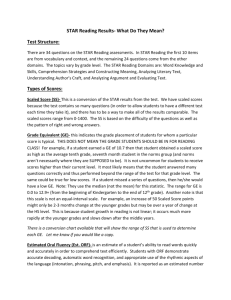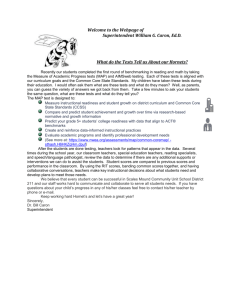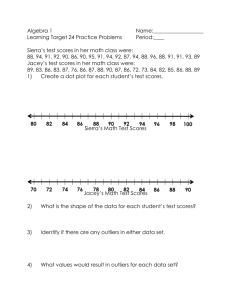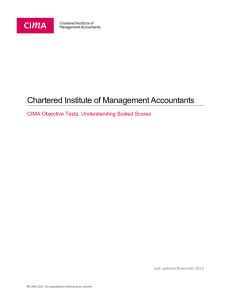STAR Math Results- What Do They Mean? Test Structure
advertisement
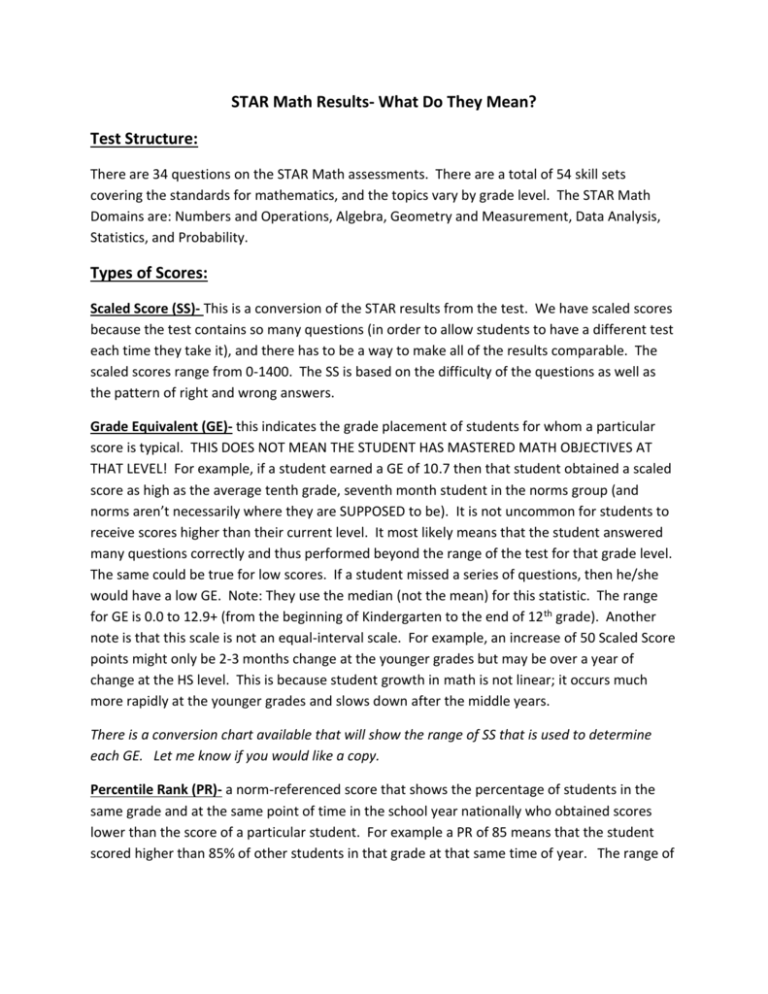
STAR Math Results- What Do They Mean? Test Structure: There are 34 questions on the STAR Math assessments. There are a total of 54 skill sets covering the standards for mathematics, and the topics vary by grade level. The STAR Math Domains are: Numbers and Operations, Algebra, Geometry and Measurement, Data Analysis, Statistics, and Probability. Types of Scores: Scaled Score (SS)- This is a conversion of the STAR results from the test. We have scaled scores because the test contains so many questions (in order to allow students to have a different test each time they take it), and there has to be a way to make all of the results comparable. The scaled scores range from 0-1400. The SS is based on the difficulty of the questions as well as the pattern of right and wrong answers. Grade Equivalent (GE)- this indicates the grade placement of students for whom a particular score is typical. THIS DOES NOT MEAN THE STUDENT HAS MASTERED MATH OBJECTIVES AT THAT LEVEL! For example, if a student earned a GE of 10.7 then that student obtained a scaled score as high as the average tenth grade, seventh month student in the norms group (and norms aren’t necessarily where they are SUPPOSED to be). It is not uncommon for students to receive scores higher than their current level. It most likely means that the student answered many questions correctly and thus performed beyond the range of the test for that grade level. The same could be true for low scores. If a student missed a series of questions, then he/she would have a low GE. Note: They use the median (not the mean) for this statistic. The range for GE is 0.0 to 12.9+ (from the beginning of Kindergarten to the end of 12 th grade). Another note is that this scale is not an equal-interval scale. For example, an increase of 50 Scaled Score points might only be 2-3 months change at the younger grades but may be over a year of change at the HS level. This is because student growth in math is not linear; it occurs much more rapidly at the younger grades and slows down after the middle years. There is a conversion chart available that will show the range of SS that is used to determine each GE. Let me know if you would like a copy. Percentile Rank (PR)- a norm-referenced score that shows the percentage of students in the same grade and at the same point of time in the school year nationally who obtained scores lower than the score of a particular student. For example a PR of 85 means that the student scored higher than 85% of other students in that grade at that same time of year. The range of percentile ranks is 1-99. It is not an equal-interval scale, so these scores should not be averaged. Normal Curve Equivalent (NCE)- scores that have been scaled in such a way that they have a normal distribution. They also range from 1-99 so they appear similar to PRs, but these are based on an equal interval scale. The NCEs are useful for statistical analyses and therefore do not have a lot of meaning for sharing data with parents. So What Do We Use? The scores to be used depend on the information desired. If you want to compare students at a national level you would use PR or GE. The GE also provides information regarding number sense and knowledge of a variety of mathematical concepts. The SS will give you an indication of the level of difficulty students were reaching while getting correct answers.
